This post may contain affiliate links. As an Amazon Associate I earn from qualifying purchases.
* * *
It’s easy to fall into FOMO when planning your Egypt trip. The city of Luxor alone has more than two dozen ancient Egyptian temples and you’ll find plenty more scattered elsewhere along the Nile. Seeing all of them is hardly necessary — but which do you choose?
Below, I’ve summarized my recommendations for which temples in Egypt to visit. I’ve tried to balance a variety of designs and history to ensure you’re always interested rather than suffering from “temple fatigue.” I’ve also factored in ease of access, crowd size, and admission cost. I’ve also summarized a few temples I thought were overrated and okay to skip — you might be surprised, since it includes some big name temples.
In general, one of my top Egypt travel tips is to include a variety of archaeological sites with things that have nothing to do with history. Because of that, I hope this list of temples from ancient Egyptian temples helps you pare down your list to a manageable amount (and leave time for other sightDOING, too).
How Many Temples to Visit in Egypt?
Like anything with travel, it’s best to be honest with yourself about your interests. If you’re a history buff, you could probably spend a week straight in Upper Egypt without getting bored. If history’s not your thing and you expect to be amazed by the general grandeuer (versus the intricacies), you might want to skip right to the highlights.
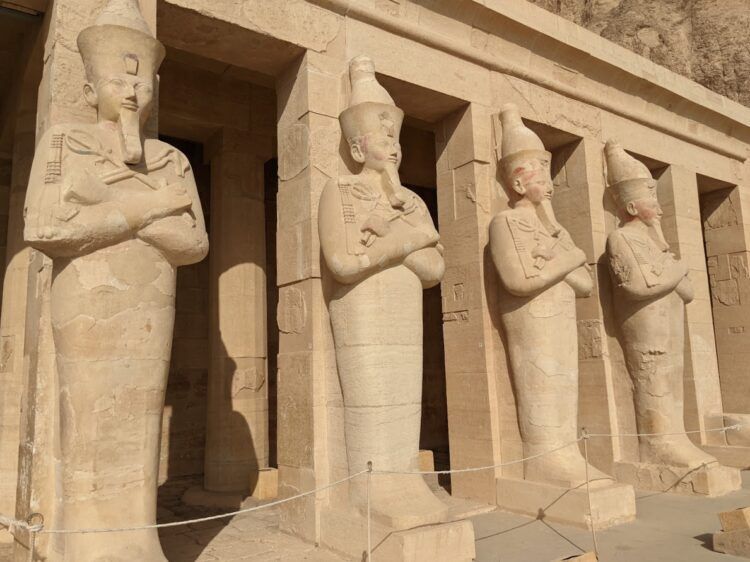
Over the course of five days (about the standard length of a tourist visit to Luxor and Aswan), I visited 8 different Egyptian temples in addition to museums and other historical sites. Before my trip, I thought that would be borderline too many. In reality, it never felt repetitive — but I think only due to smart choices while planning. For me, more would’ve been overkill.
You’ll stay interested longer if you have an Egyptologist or other guide who can provide stories and context about what you’re seeing. A great guide can make each temple look different from the last, even if they otherwise have a lot in common. We actually used multiple guides, enjoying that each had their own style: for example, one might give more of a broad overview and insight into the history while another might focus on the art, symbolism, and hieroglyphics. If you have a specific interest, ASK when you book the tour because agencies usually work with multiple individuals and can find the right tour guide for you.
At a Glance: the 3 Top Temples in Egypt
If you are really tight on time (or interest) and only want to include a few top Egyptian temples, I recommend seeing the Valley of the Kings, Temple of Luxor, and Medinet Habu. All of them are in Luxor which means you can condense your visit to just one city in Upper Egypt. They’re all easy to reach by taxi (or one-day tour) and reasonably priced for admission.
- Valley of the Kings is a set of tombs which means it looks very different from the above-ground temples elsewhere in Egypt.
- Luxor Temple is open well into the evening hours, which means you can enjoy it at sunset and after dark.
- Medinet Habu has well-preserved reliefs and giant carvings with only a fraction of the tourist traffic.
If you have time for another, I’d recommend either Dendera Temple (in Qena) or Philae Temple (in Aswan). Both are examples of Ptolemaic architecture and therefore have a really different look and feel to them.
Must-Visit Egyptian Temples in Luxor
Luxor — formerly known as Thebes — was the ancient capital of Egypt and because of that, it’s where you’ll find the greatest concentration of temples and tombs. Most itineraries suggest spending two days in Luxor, one for the East Bank (Temple of Luxor, Temple of Karnak, Luxor Museum, Mummification Museum) and one day on the West Bank (Valley of Kings, Temple of Hatshepsut, Colossi of Memnon, and numerous other temples to choose from).
In my opinion, you’re better off spending three days here to space out your temple visits and allow plenty of time for other types of activities…plus some downtime because it can be an overwhelming environment sometimes!
Valley of Kings
Valley of the Kings is probably the best-known site in Luxor. There are 65 royal tombs from the New Kingdom, several of which are wonderfully preserved or restored to impressive shows of color and art. Each tomb has a similar structure, with an underground passageway depicting the Book of the Dead and leading to the pharoah’s tomb, which would hold the sarcophagus and mummy along with treasures they’d need in the afterlife.
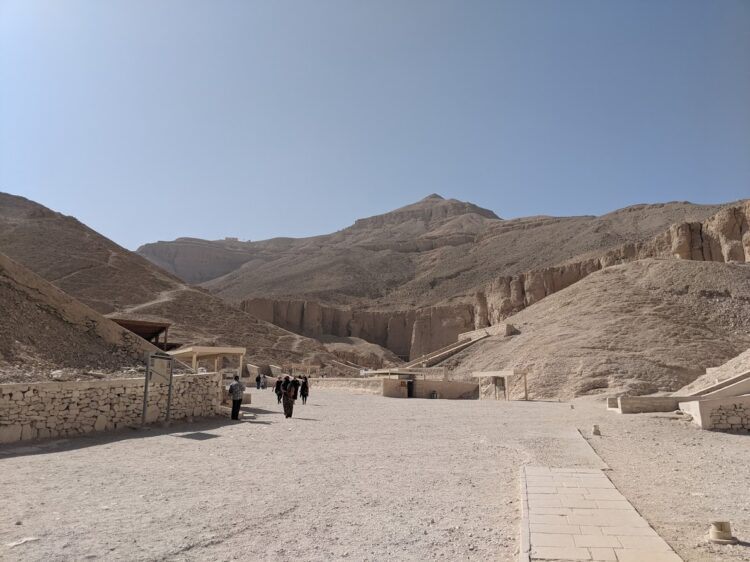
Not all of the 65 tombs are open to the public: some are permanently closed for restoration work while others close on rotation to minimize tourist traffic. However, there will be 8-10 tombs open and your general admission allows you to choose 3 of which to visit. I recommend including KV2 (tomb of Ramses IV) — it has an elaborate, colorful corridor with a lot to see.
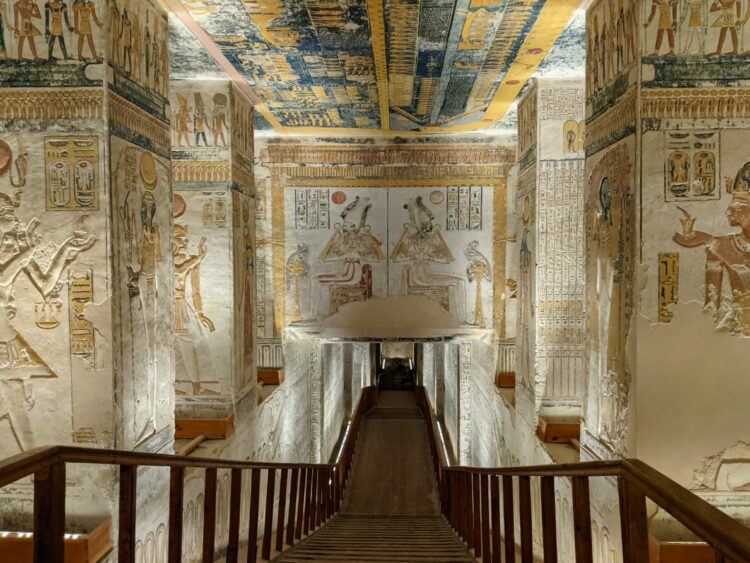
For the other two temples, trust your guide’s recommendation: there’s a good chance the one they recommend is one they’re passionate about and thus can share fabulous stories that make it come to life. There’s also something to be said about visiting a tomb without a lot of visitors so you can peruse the imagery at your own pace (this, of course, will be determined based on the timing of your visit). For what it’s worth, we toured KV11 (Ramses III) which had a long, uncrowded passageway and KV8 (Merenptah), which featured a large burial chamber.
At Valley of the Kings, there are also three tombs you can “add on” for additional cost:
- KV9 (Ramses V and VI) – 100 Egyptian pounds
- KV18 (Seti I) – 1,000 Egyptian pounds
- KV62 (Tutankhamun) – 300 Egyptian pounds
We added on KV9 to see the joint tomb of pharaohs Ramses V and VI and thought it was well worth it. Not only is the story behind it interesting, but there are spectacular colors and inscriptions to see.
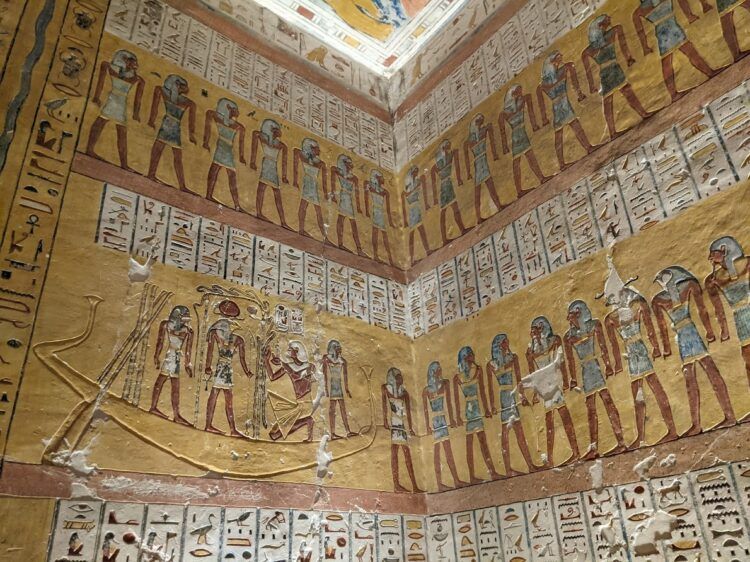
Most reviews agree that Tutankhamen’s tomb isn’t worth it; it’s mostly barren with the exception of his mummy (but you can see mummies at both museums in Luxor and the Grand Egyptian Museum in Cairo). Seti I is supposed to be brilliant, but I can’t imagine paying $65 to see a single tomb.
PRO TIP: Valley of the Queens and Tombs of the Nobles are similar to Valley of the Kings, but with fewer visitors. If you like Valley of the Kings, ask your guide to tack on a visit to one of these as well. At Valley of the Queens, Nefertari’s tomb comes with an absurd extra charge (1400 EGP) but is one of the most colorful temples in Egypt. If you intend to see it and Seti I at VoK, you’ll be money ahead by buying a Luxor Pass.
Temple of Luxor
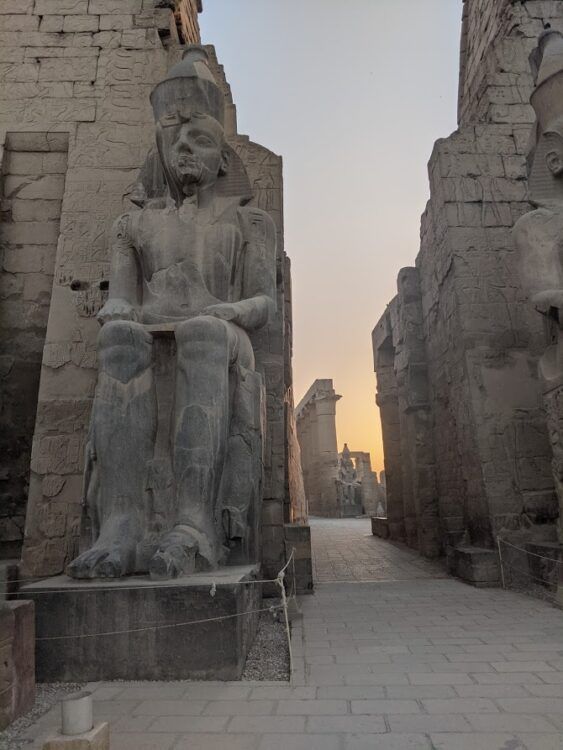
Luxor Temple ended up being a surprising favorite on my trip. It’s right in the heart of downtown Luxor and the urban setting makes it really unique. From street level, it looks pretty run-down but once you’re inside it’s spectacular.
The Temple of Luxor has a lot of iconic features: giant columns, an obelisk, huge statues of Ramses II, and the Avenue of Sphinxes. If you’re looking for a lot of wow factor in a single place, this is a great one.
However, what makes this one extra special is that it’s open after dark. If you time your visit right, you can visit in daylight and then stay for sunset, twilight, and darkness. Each time of day has a different feel to it and you’ll notice different details in the different lights. We walked the grounds several times, never once feeling like we were retracing our steps.
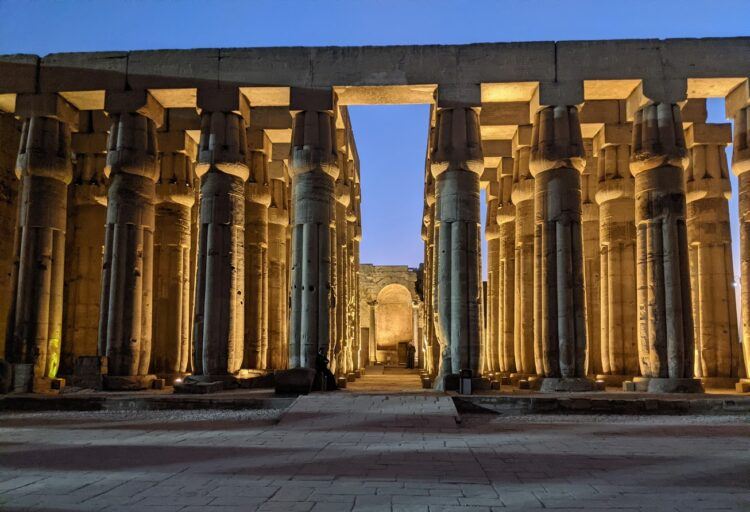
Medinet Habu
We almost left Medinet Habu off our list, but I’m so glad we carved out the time to visit. On the west bank, not far from Valley of the Kings and other famous temples in Egypt, this one doesn’t get nearly as many tourists. I don’t understand why: it has an impressive, tall entry with lots of inscriptions inside.
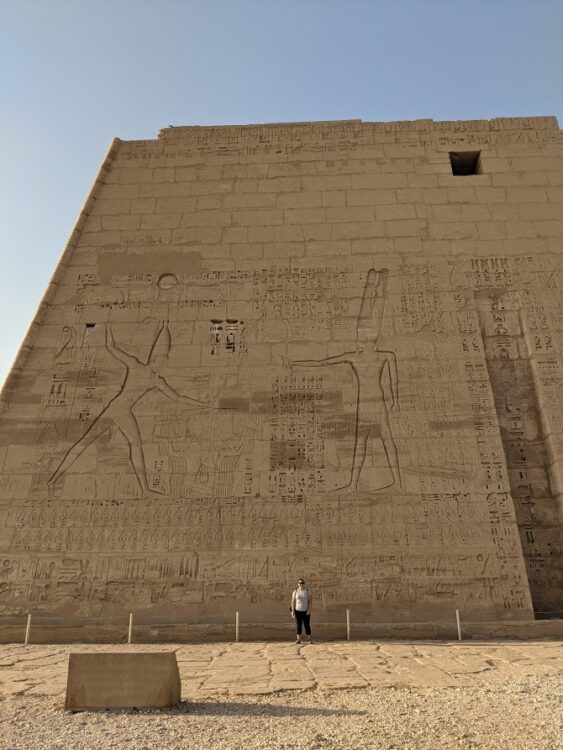
Since you won’t be fighting crowds to explore here, you can really take your time examining the inscriptions and craning your neck toward the ceiling to see a few lingering colors. The murals on the exterior wall depict an easy-to-follow battle story, making this a temple you can easily visit without a guide if you need to save some money.
We actually arrived at Medinet Habu by horseback. You can head on a direct route there (about one hour each way, through farm fields and small villages) or take the long way (2-2.5 hours through the desert and past historical sites like the Colossi of Memnon and Ramesseum). The Arabian horses we rode were in excellent health and not anything like the starving horses you see pulling carriages in the city.
PRO TIP: Tickets aren’t sold right at the entryway; you’ll need to walk about 5 minutes down the road to the “Antiquities Inspectorate Ticket Office” (as named by Google Maps) to get tickets before entering.
Maybe: Temple of Karnak
The Temple of Karnak on Luxor’s East Bank is one of the most well-known temples in Egypt but I don’t think it’s an absolute must-see. It’s not in as great of shape as some other Egyptian temples so it has more of a “ruined” feel than one of amazement. It’s also more heavily-trafficed than a number of other temples in the area which can deter from the experience.
What makes Karnak Temple Complex so impressive is its size: 250 acres. That makes it the largest religious building constructed, although three quarters of it is closed to the public so some of the vastness is lost on visitors.
If you decide to go, the highlight for me was the Great Hypostyle Hall, an area filled with 134 tall columns.
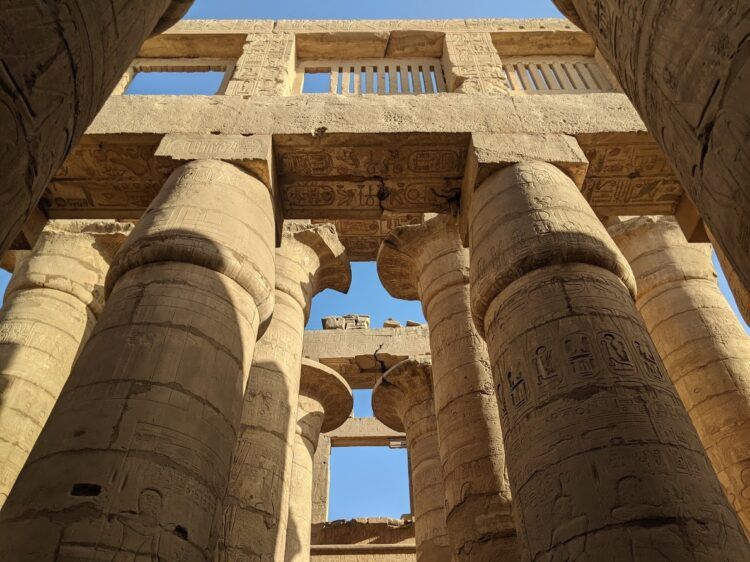
PRO TIP: Karnak is a great place to pay for a guide. Since the complex was built over such a large time period and features a wide cross-section of history, a guide can point out who built what and why it was important in Egyptian religion.
Maybe: Mortuary Temple of Hatshepsut (Deir el-Bahari)
As a female traveler, I felt obligated to visit Hatshepsut’s Temple. The story of this female pharaoh — if you aren’t familiar with it already — is fascinating.
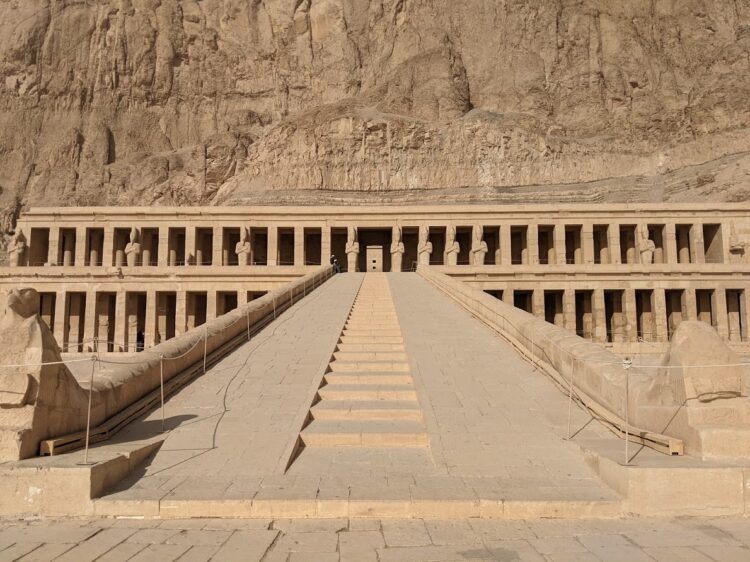
The Temple of Hatshepsut is also cool due to its setting built right into the mountainside. We didn’t see anywhere else that looked anything like it and I appreciated its uniqueness. However, there’s not much to see inside the temple building itself which made it a bit of a letdown. Go for the history and architecture. For fine details, you’ll want to choose a different temple in Egypt.
Other Things to Do in Luxor
Colossi of Memnon: Just about every West Bank tour will include a photo stop here. Make sure you walk up close to get a true sense of scale.
Luxor Museum: This is a mini-version of Cairo’s museum, with artifacts found in some of the local temples and tombs. There are some English signs, but you may want a guide to act as a docent.
Mummification Museum: This one-room exhibit has a few mummies (human and animal) in it, but it’s totally skippable if you’ll see the mummy room at the Cairo Museum which is head and shoulders better than this one.
Other popular activities in the area include shopping at the Luxor Market, hot air ballooning over the West Bank, and boat rides to Banana Island in the Nile.
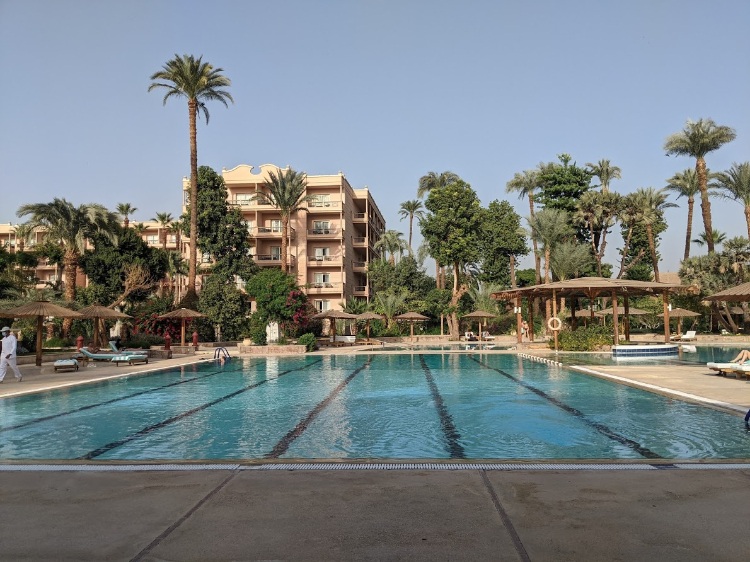
Need a Hotel in Luxor?
We stayed at the Sofitel Winter Palace in Luxor and highly recommend it. The beds were comfortable, the rooms were well soundproofed (important in busy Luxor!), and it was easy walking distance to the Temple of Luxor, Corniche and riverboats, both museums, restaurants, ATMs, and the train station.
Pick a rate that includes breakfast. Not only is it open early (5:30am!), but the service was phenomenal. A typical spread included breads, pastries, fruit, meats, cheeses, coffee, tea, juice, and your choice of a hot entree like eggs, foul, or pancakes.
Must-See Temples in Aswan
Aswan felt like a different world compared to Luxor. For one thing, the Nubian heritage and culture there has a profound influence. On top of that, the Nile River is far more photogenic, with islands dotting the wide river and plenty of palm trees and greenery on the east bank with large sand dunes and historical ruins sitting on the west.
Temple of Philae
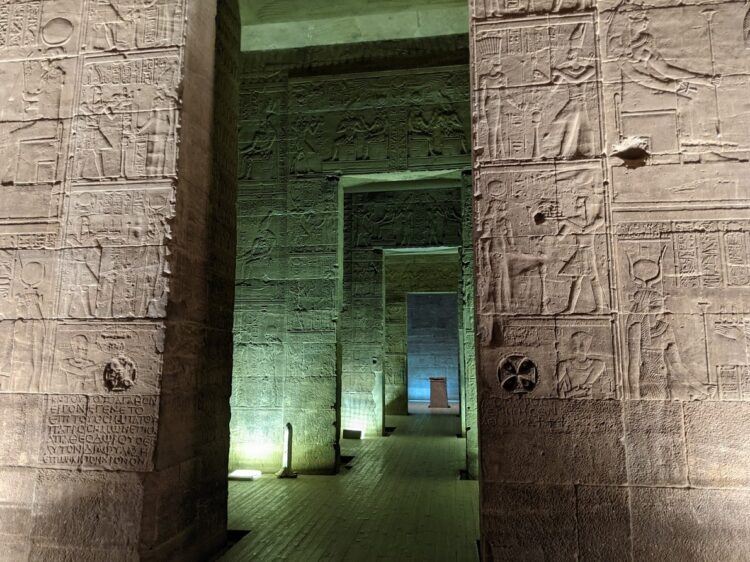
Philae Temple is the only major temple in Aswan itself and it’s entirely different from any of the temples in Luxor. It’s much more recent — built around 280 BCE — and has a Greco-Roman look to it. It sits on an island south of Aswan and, amazingly, was moved there block by block in the 20th century to save it from being flooded after the construction of the new dam. You’d never know it was moved since it was so carefully done!
Not only does Philae look different, but the approach by water also makes it special. Unfortunately, the short boat ride can add considerable expense to your visit depending on your negotation skills.
You can visit the Temple of Philae in the daytime or at night for the Sound and Light show. I wouldn’t bother with going both times — it’s a decent trek outside the city so you’ll spend too much time in transit (and too much money on boats). Choose what works best for your schedule.
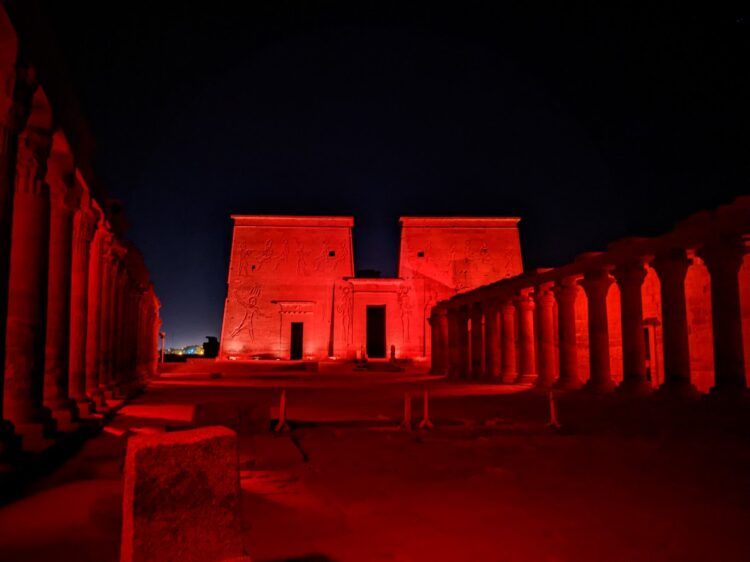
PRO TIP: There are no taxis just casually passing by here, so you’ll need to arrange to have your driver wait (estimate about 1.5 hours for the round-trip boat + touring the island).
Abu Simbel Temple
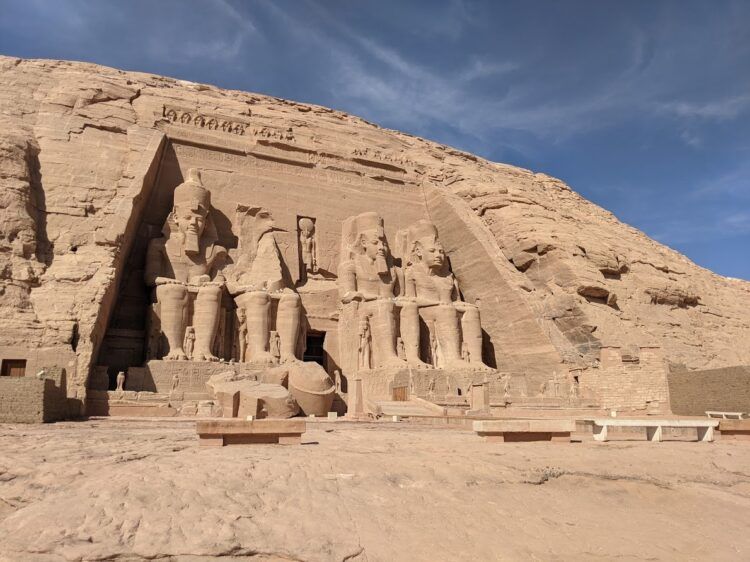
I’m going to speak blasphemy here: I didn’t think Abu Simbel was worth the long drive (3 hours each way from Aswan) but I know none of you will ever believe me. It was a long way to travel to see a temple that wasn’t remarkably different from anything else I saw. In any case, no guide to Egypt’s temples would be complete without mention of Abu Simbel.
Ramses the Great’s temple is noteworthy for its precision: twice a year, the sunrays exactly reach and light up the inner sanctum. Realistically, though, most tourists won’t be there on two days that happens.
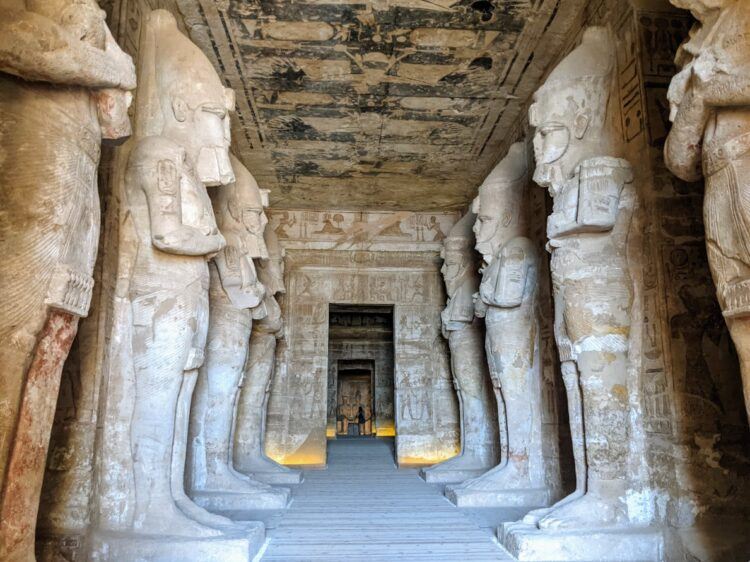
The two temples on-site are also well-known for the giant statues sitting outside their doors. Based on photographs, I thought they would be larger than they actually are. Turns out, Abu Simbel has a great marketing team! Admittedly, the insides have a lot to take in, but no more so than some of the other best temples in Egypt (which are much more easily accessed).
Abu Simbel is beautiful and interesting, but is it worth spending six hours in a car? I didn’t think so — in retrospect, I would’ve spent that time exploring more of Egypt’s treasures. Hindsight is 20/20.
Other Things to Do in Aswan
In my opinion, none of the following are must-do.
Unfinished Obelisk: If you’re interested in the creation and engineering of a monumental obelisk, it’s cool to see this one still lying (unfinished, cracked, and abandoned) in the bedrock around it.
Aswan High Dam: The dam itself is likely not interesting to anyone except an engineering student, but a visit (with a guide) can help explain the significance of how it shaped local life and culture.
Tombs of the Nobles: Easily reached by ferry to the west bank, these tombs are smaller and less ornate than anything you’ll see in Luxor.
St Simeon Monastery: This mud-brick building looks different than the ancient Egyptian temples, but the main draw to visiting is actually the camel ride from Tombs of the Nobles through the desert to here (compared to a lengthy taxi ride).
Botanical Garden: These gardens are more of a city park, but it’s a pleasant change of pace if you’re coming from the hustle of Luxor. Arrive by boat for a stroll in late afternoon, returning leisurely by boat at sunset.
More Temples of Egypt Between Luxor and Aswan
I didn’t see any of the temples below because I traveled by train from Luxor to Aswan. However, Nile cruises and car transfers stop in Edfu and Kom Ombo for tours so it’s likely you’ll see them mentioned in your research. The Temple of Khnum, in Esna, is also on the route between Luxor and Aswan but is widely considered the lowest priority of the three temples in this region.
Temple of Horus (Edfu)
This is one of the best-preserved temples in Egypt, since it was buried under sand for centuries that protected it from the elements. Since the roof is still intact, you can get a feel for what it would’ve been like to walk through when it was still in use.
Temple of Kom Ombo
Kom Ombo is unique since it’s a double temple, honoring both the gods of Sobek (depicted as a crocodile) and Horus (the falcon). There’s also a collection of mummified crocodiles here, which gives it an interesting twist compared to visiting other temples.
My Absolute Favorite Temple in Egypt
Dendera Temple
Near the city of Qena, the Dendera Temple Complex (and primarily the Temple of Hathor) was my favorite place to visit in all of Egypt.
Dendera is incredibly well-preserved and also lightly-visited, which makes for a compelling reason to visit. The icing on the cake is how much there is to see: every square inch of the walls, columns, and ceiling is covered. The ceiling in particular has gorgeous paintings in vibrant color that would be mesmerizing even if you don’t care about the history.
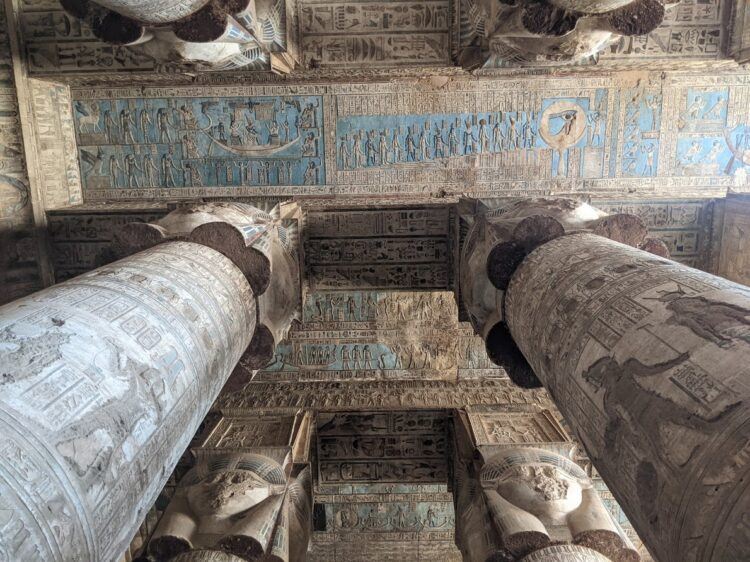
I loved walking through the columns, following the stories on the ceiling, climbing up ladders, wandering through crypts, and viewing mudbrick walls from the temple roof. Many of these experiences are 100% unique to Dendera.
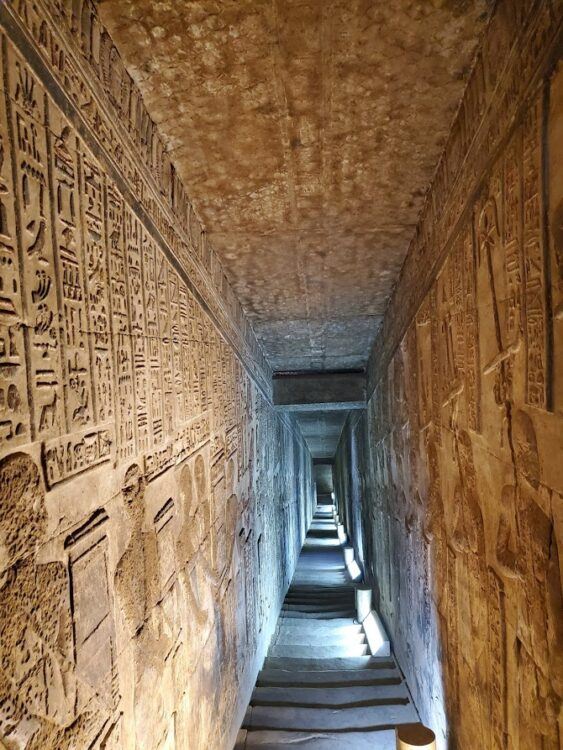
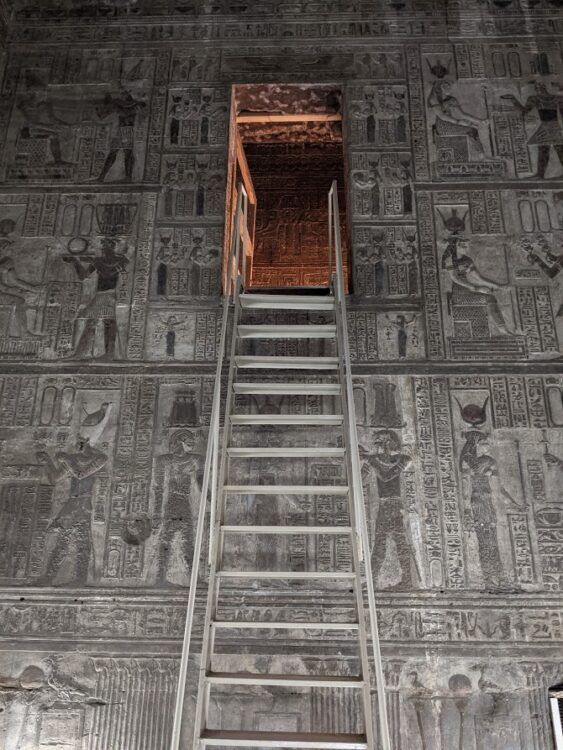
Dendera is often combined with the Great Temple of Abydos as a day-trip from Luxor, although the two temples are actually a great distance apart from each other which makes it a very long day. To visit Dendera alone, you can go by car or train from Luxor to Qena (about 1.5 hours each way). It also makes a logical stopping point if you’re heading by car from Luxor to Hurghada, which is how we arranged our visit.
Are There Temples in Cairo?
Although there’s a ton of things to do in Cairo, the ancient sites are really centered around three main pyramid sites (Giza, Saqqara step pyramid, and Dahshur bent pyramid).
However, if you’re ONLY going to Cairo and won’t have a chance to see temples anywhere else, Sakkara has a few tombs and monuments to explore which makes it a great add-on to your pyramids adventure.
More Tips for Visiting Egypt’s Temples
If you want to see these temples without the crowds, go early. Many temples open at 6am and are busiest at 9am or later, when day-trippers and cruisers arrive on site. If you’re not an early bird, try going an hour before closing or choosing sites that river cruises don’t include in their packages (e.g. Dendera, Habu).
Hire a guide in advance for at least some of the temples to give you the background and history of what you’re seeing. Any guide can give you a high-level overview, but if you’re interested in going in-depth, make sure you hire an Egyptologist. Due to their advanced education, this will cost more. We worked with the very professional Luxor and Aswan Travel. They aren’t cheap, but are more likely to negotiate if you arrange several days with them.
Bring small bills to tip guards who will likely follow you around to point things out and/or take photos of you. If you aren’t interested in their services, make that clear (politely).
Remember that touring temples involves walking and standing in the sun, so wear sunscreen and pack water (or cash to buy cold water near the entrance). The heat definitely hinders my attention span, so if that’s true for you as well, plan your schedule accordingly.

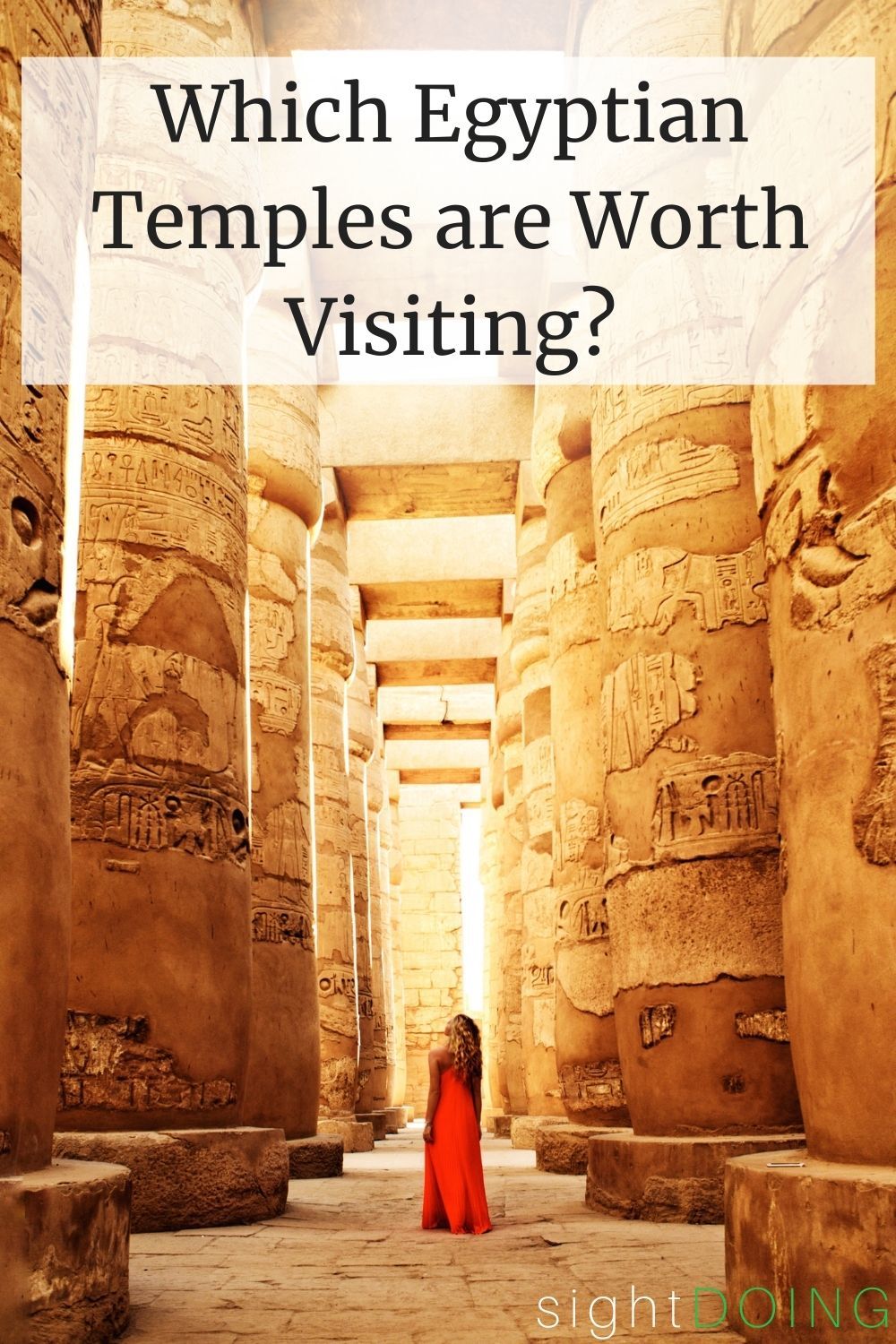
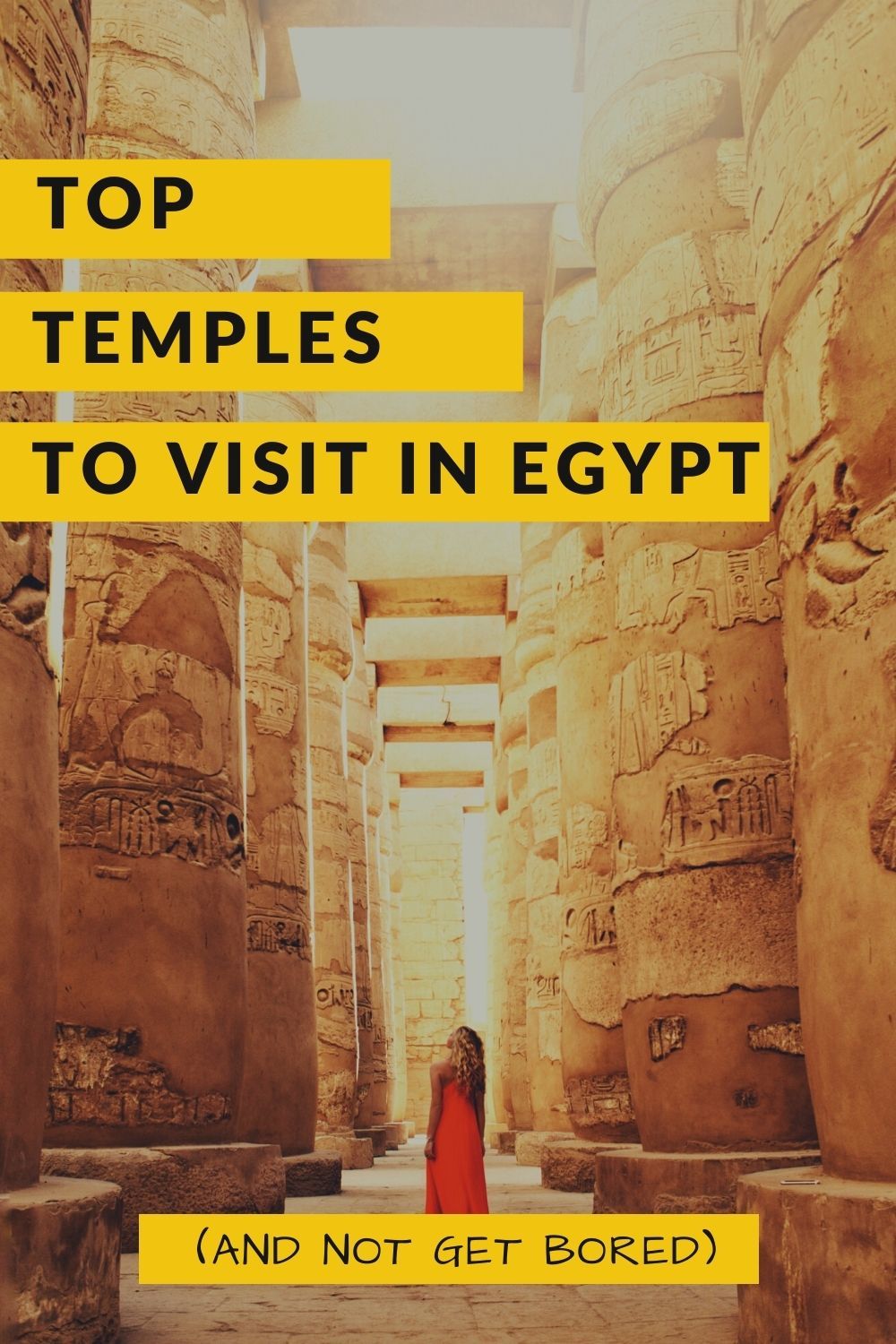
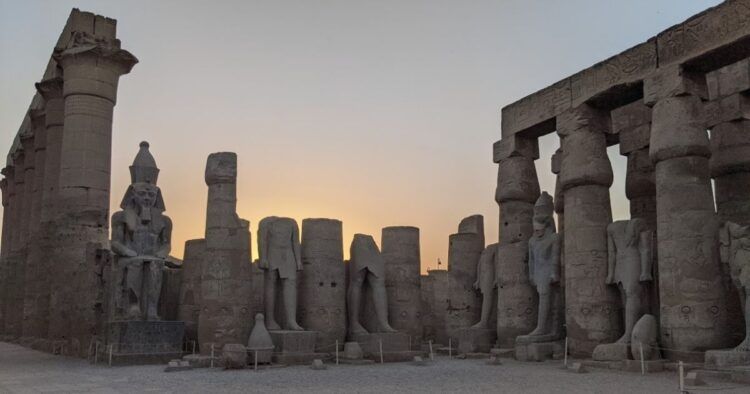
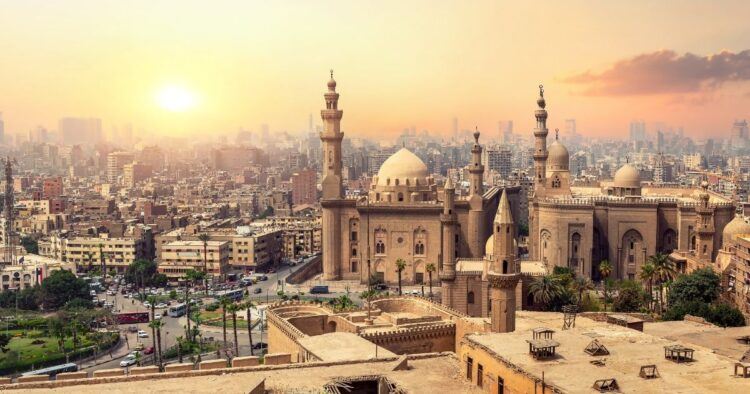
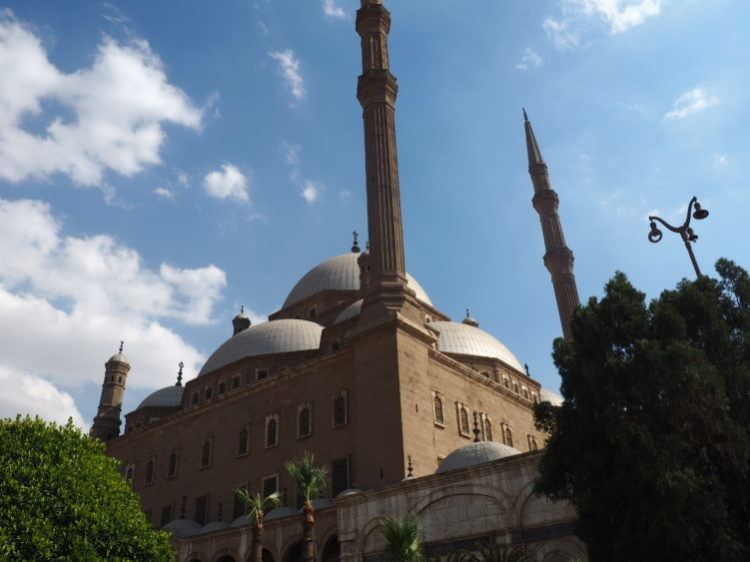


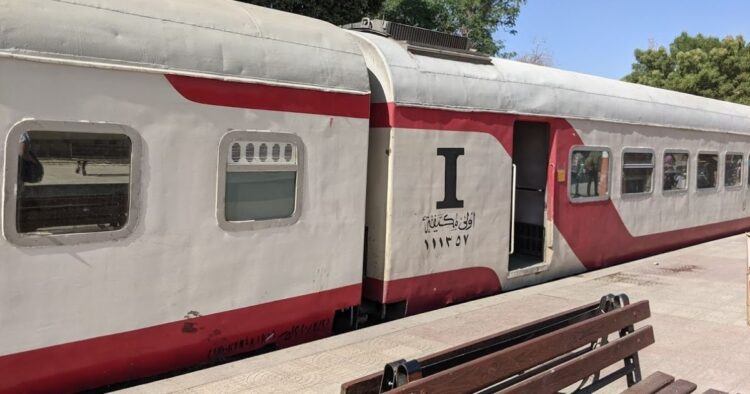
This article, and the one on Cairo as well, offer different information that I’ve encountered elsewhere, and are very well written. Good work.